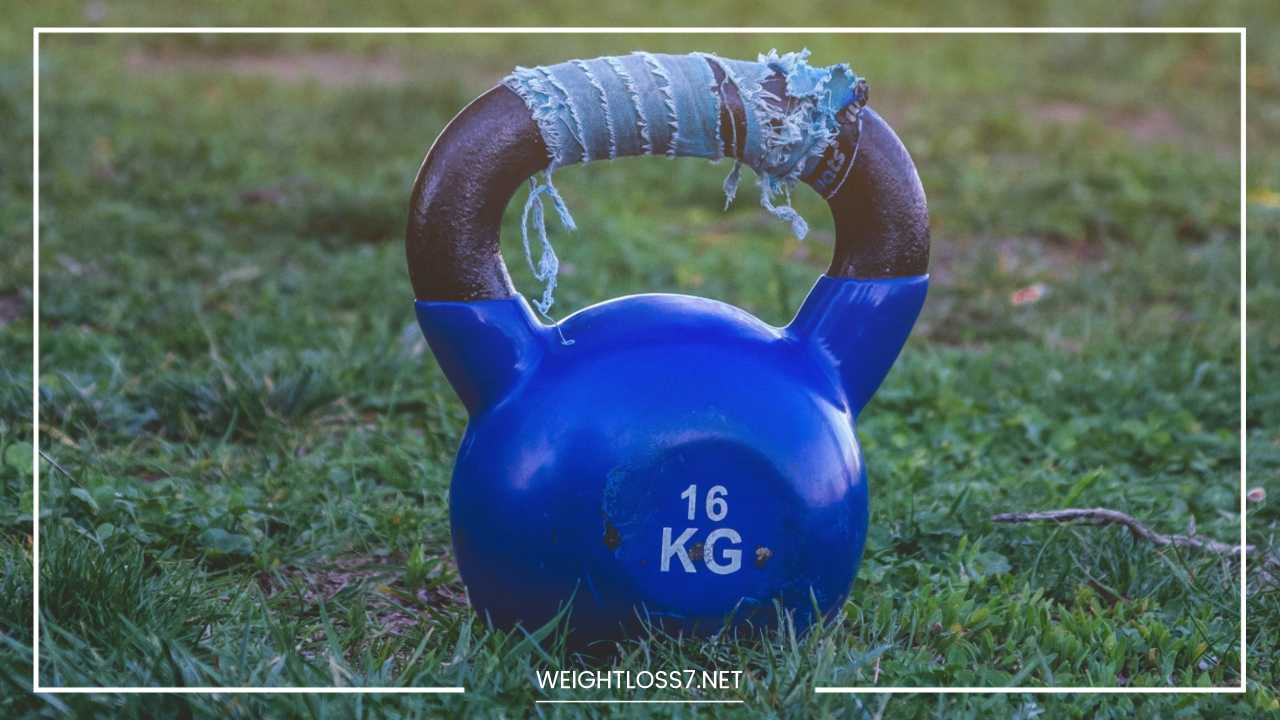How to Lose Weight in a Month

Lose Weight in a Month
Shedding Pounds Safely: A Comprehensive Guide to Sustainable Weight Loss for a Month and Beyond
The allure of a quick-fix weight loss solution is undeniable. That dream vacation is on the horizon, a special event looms large, or maybe you simply want to feel more confident in your own skin.
But amidst the internet’s relentless bombardment of crash diets and unrealistic expectations, it’s essential to remember: healthy, sustainable weight loss is a marathon, not a sprint.
This comprehensive guide will debunk the myths of fad diets and equip you with practical, achievable strategies for weight loss that extend far beyond a single month.
We’ll delve into dietary tweaks, explore a variety of exercise routines, and unpack lifestyle changes that empower you to reach your goals without sacrificing your health or well-being.
Setting the Stage for Success: SMART Goals and Healthy Expectations
Before diving headfirst into meal plans and exercise routines, take a step back and establish SMART goals. SMART stands for Specific, Measurable, Achievable, Relevant, and Time-Bound. Here’s what that translates to in the context of weight loss:
- Specific: Instead of a vague “I want to lose weight,” aim for a targeted goal like “I want to lose 5-10 pounds in a month.”
- Measurable: Track your progress. Weigh yourself regularly (but not obsessively) and take body measurements to monitor changes.
- Achievable: Don’t set yourself up for failure with unrealistic goals. A healthy rate of weight loss is generally considered 1-2 pounds per week.
- Relevant: Is your target weight within a healthy range for your height, build, and age? Consult a doctor or registered dietician for personalized guidance.
- Time-Bound: Establish a specific timeframe to reach your goal. “I will lose 5-10 pounds by the end of next month” provides a clear target.
Remember, weight loss is a journey, not a destination. There will be setbacks and stalls along the way. Focus on progress over perfection, celebrate your non-scale victories (like increased energy or improved endurance), and be kind to yourself throughout the process.
Fueling Your Body for Success: Dietary Strategies for Weight Loss
Diet plays a crucial role in weight loss, and the key lies in nourishing your body with wholesome, unprocessed foods. Let’s explore some practical dietary strategies that support your goals:
- Embrace Whole Foods: Prioritize fruits, vegetables, whole grains, lean protein sources, and healthy fats. These nutrient-dense foods provide sustained energy, keep you feeling full, and deliver essential vitamins and minerals for overall health.
- Befriend Fiber: Fiber keeps you feeling satiated and reduces cravings. Aim for 25-35 grams of fiber per day. Load up on fruits, vegetables, legumes, lentils, and whole grains to reach your fiber goals.
- Mindful Eating: Practice mindful eating to cultivate a healthy relationship with food. Eat slowly, savor your food, and stop eating when you’re comfortably full. This allows your body to register satiety cues and prevents overeating.
- Portion Control is Key: Read food labels and be mindful of portion sizes. Use smaller plates and bowls to avoid mindless overeating. Consider using measuring cups and spoons for added accuracy, especially when dealing with calorie-dense foods like nuts and healthy oils.
- Hydration is Essential: Water should be your go-to beverage. Drinking plenty of water helps curb cravings, keeps you feeling full, and flushes out toxins. Aim for eight glasses of water per day, adjusting based on your activity level and climate.
- Limit Sugary Drinks and Processed Foods: Sugary drinks like sodas, juices, and commercially prepared coffee drinks are loaded with hidden calories and can contribute to weight gain. Restrict these beverages and opt for water, unsweetened tea, or black coffee instead. Similarly, processed foods are often high in unhealthy fats, added sugars, and sodium, all of which can hinder weight loss efforts.
Don’t Restrict, Substitute: Deprivation often leads to binges. Instead of completely eliminating your favorite foods, find healthy alternatives. Swap sugary snacks for fruits with a dollop of nut butter, or satisfy your sweet tooth with a small piece of dark chocolate instead of a whole candy bar.
Plan Your Meals: Planning your meals in advance helps you make healthy choices and avoid unhealthy impulse buys at the grocery store. Prepare healthy snacks and pack lunches to stay on track throughout the day.
Cook More at Home: Cooking at home allows you to control the ingredients and portion sizes. Experiment with new recipes that are both delicious and nutritious.
Building a Sustainable Exercise Routine
Exercise is a powerful tool for weight loss and overall health. Here are some tips to create an exercise routine that you can enjoy, stick with, and see results from.
Finding Activities You Enjoy: The key to sticking with an exercise routine is finding activities you genuinely enjoy. This will make workouts feel less like a chore and more like a fun way to move your body and improve your health. Here are some ideas to get you started:
- Cardio: Aim for at least 150 minutes of moderate-intensity cardio or 75 minutes of vigorous-intensity cardio per week. Moderate-intensity activities leave you slightly out of breath and able to carry on a conversation. Examples include brisk walking, jogging, swimming, cycling, dancing, or group fitness classes. Vigorous activities leave you breathless and unable to hold a conversation comfortably. Options include sprinting, interval training, high-impact aerobics, or certain sports like basketball or tennis.
- Strength Training: Incorporate strength training exercises at least twice a week. Building muscle mass boosts your metabolism, helping you burn more calories throughout the day, even at rest. You can use bodyweight exercises like squats, lunges, push-ups, rows, and planks, or free weights, resistance bands, or weight machines.
- Low-Impact Activities: If you’re new to exercise or have joint pain, consider low-impact activities like swimming, water aerobics, yoga, or Pilates. These activities provide a great workout without putting excessive stress on your joints.
- Variety is Key: Don’t get stuck in a rut! Mix up your workouts with different activities to keep things interesting and challenge your body in new ways.
Starting Gradually and Progressing Safely:
- Listen to your body: It’s important to start slowly, especially if you’re new to exercise. Begin with shorter workouts and gradually increase the duration and intensity as your fitness level improves.
- Warm-up and Cool-down: Always warm up before your workout with 5-10 minutes of light cardio and dynamic stretches to prepare your muscles for activity. Similarly, cool down after your workout with static stretches to improve flexibility and reduce muscle soreness.
- Rest and Recovery: Schedule rest days for your body to recover and rebuild muscle. Aim for at least one rest day per week, and listen to your body if you need additional recovery time.
Finding an Exercise Buddy or Joining a Fitness Class:
Having an accountability partner or joining a fitness class can provide motivation and support. Working out with a friend or group can make exercise more enjoyable and help you stay on track.
Transforming Your Lifestyle for Long-Term Weight Management
Sustainable weight loss goes beyond just diet and exercise. Here are some lifestyle changes that can significantly impact your weight loss journey and overall well-being:
- Prioritize Sleep: Aim for 7-8 hours of quality sleep each night. When sleep-deprived, your body produces more ghrelin, the hunger hormone, and less leptin, the satiety hormone, leading to increased cravings and potential overeating.
- Manage Stress: Chronic stress can elevate cortisol levels in the body, promoting weight gain around the midsection. Find healthy ways to manage stress, such as yoga, meditation, deep breathing exercises, spending time in nature, or listening to calming music.
- Mindful Eating Practices: Develop a mindful relationship with food. Eat slowly, savor your food, and avoid distractions like watching television or scrolling through your phone while eating. Pay attention to your body’s hunger and fullness cues.
- Cook More at Home: As mentioned earlier, cooking at home allows you to control the ingredients and portion sizes. Experiment with healthy recipes that are both delicious and nutritious. Meal prepping on weekends can save you time and ensure you have healthy options readily available throughout the week.
- Stay Hydrated: Drinking plenty of water keeps you feeling full, reduces cravings, and flushes out toxins. Aim for eight glasses of water per day and adjust based on your activity level and climate.
- Find Healthy Alternatives: Satisfy cravings with healthier options. Instead of reaching for sugary snacks, grab a piece of fruit with nut butter, enjoy a handful of air-popped popcorn, or indulge in a square of dark chocolate.
- Limit Processed Foods: Processed foods are often high in unhealthy fats, added sugars, and sodium, all of which can contribute to weight gain. Opt for whole, unprocessed foods whenever possible.
- Read Food Labels: Become a savvy label reader. Pay attention to serving sizes, calorie counts, and the sugar content, particularly added sugars.
- Celebrate Non-Scale Victories: Weight loss isn’t just about the numbers on the scale. Celebrate your non-scale victories, such as increased energy levels, improved sleep, better fitting clothes, or newfound confidence.
- Find an Accountability Partner: Having someone to support and motivate you can be a great help. Share your journey with a friend, family member, or online community to stay on track, celebrate your victories, and get support during challenges.
-
Share Your Journey and Seek Support: Having someone to support and motivate you can be a game-changer. Share your weight loss journey with a friend, family member, or online community. There are numerous weight loss forums and social media groups where you can connect with others on a similar path.
-
Seek Professional Help When Needed: If you’re struggling to lose weight on your own, or have underlying health conditions, don’t hesitate to consult a doctor, registered dietician, or licensed therapist. A healthcare professional can provide personalized guidance, address any underlying medical issues, and create a safe and effective weight loss plan tailored to your specific needs.
Remember: Weight loss is a journey, not a destination. There will be setbacks and stalls along the way. Focus on progress over perfection, celebrate your non-scale victories, and be kind to yourself throughout the process.
Embrace healthy habits, find activities you enjoy, and don’t be afraid to seek support when needed. With dedication and the right approach, you can achieve your weight loss goals and create a healthier, happier you.
Additional Tips and Resources
- Track Your Progress: Keeping a food journal or using a weight loss app can help you track your progress, identify areas for improvement, and stay motivated.
- Meal Prep for Success: Spend some time on weekends prepping healthy meals and snacks for the week ahead. This will save you time during busy days and help you avoid unhealthy temptations.
- Find Inspiration Online: There’s a wealth of information and inspiration available online. Look for healthy recipes, workout routines, and motivational blogs and articles. However, be wary of unrealistic fad diets and quick-fix promises. Stick to reliable sources and information backed by science.
- Make Gradual Changes: Sustainable weight loss is about making long-term lifestyle changes. Don’t try to overhaul your entire routine overnight. Start with small, manageable changes that you can gradually integrate into your daily life.
Final Word:
Shedding pounds safely and effectively requires a multi-pronged approach. By combining a balanced diet with regular exercise and healthy lifestyle habits, you can achieve your weight loss goals and create a healthier, happier you. Remember, this is a journey, not a race.
Embrace the process, celebrate your progress, and don’t be afraid to seek support when needed. With dedication and the right tools, you can reach your desired weight and develop a sustainable lifestyle that promotes long-term health and well-being.

















